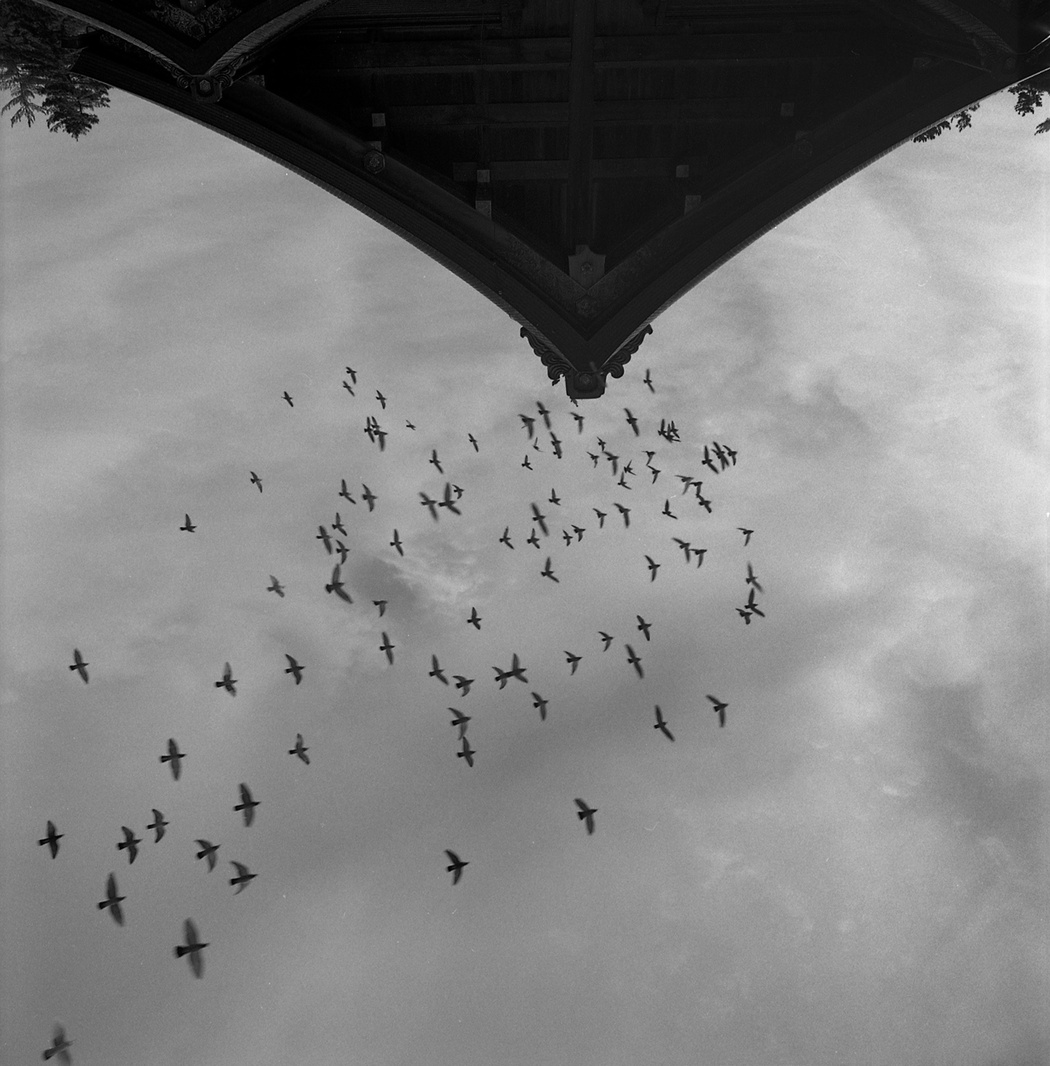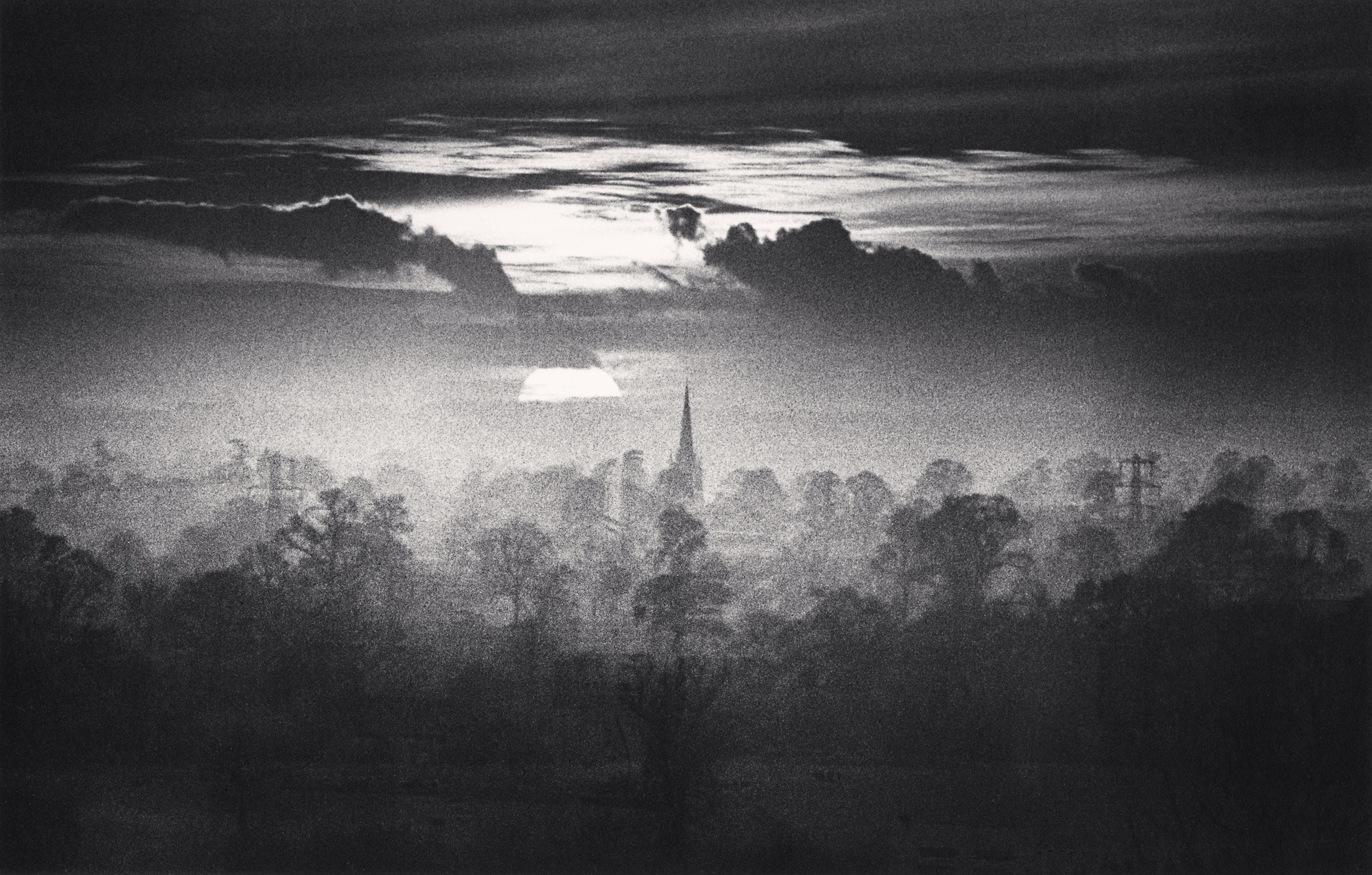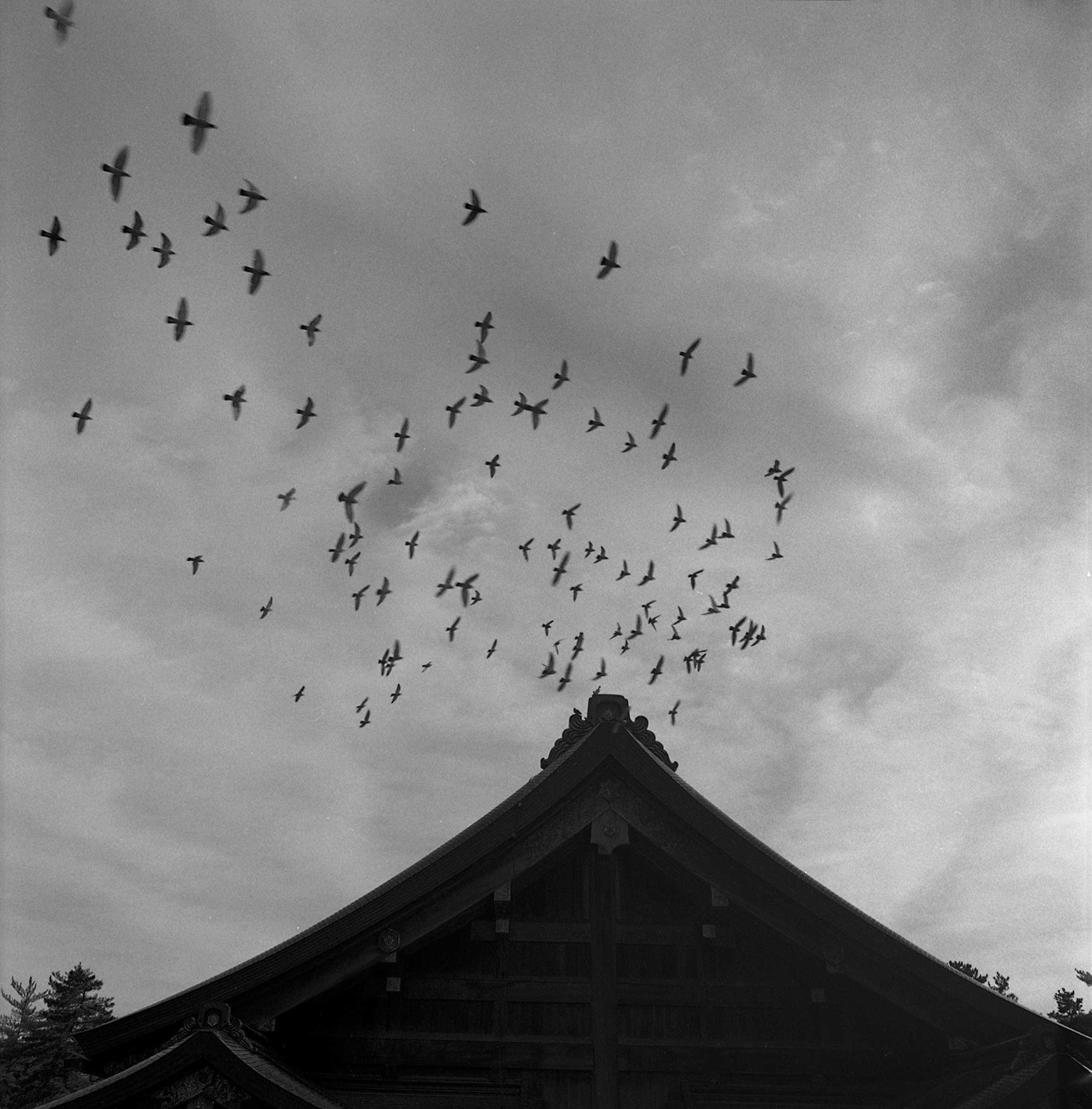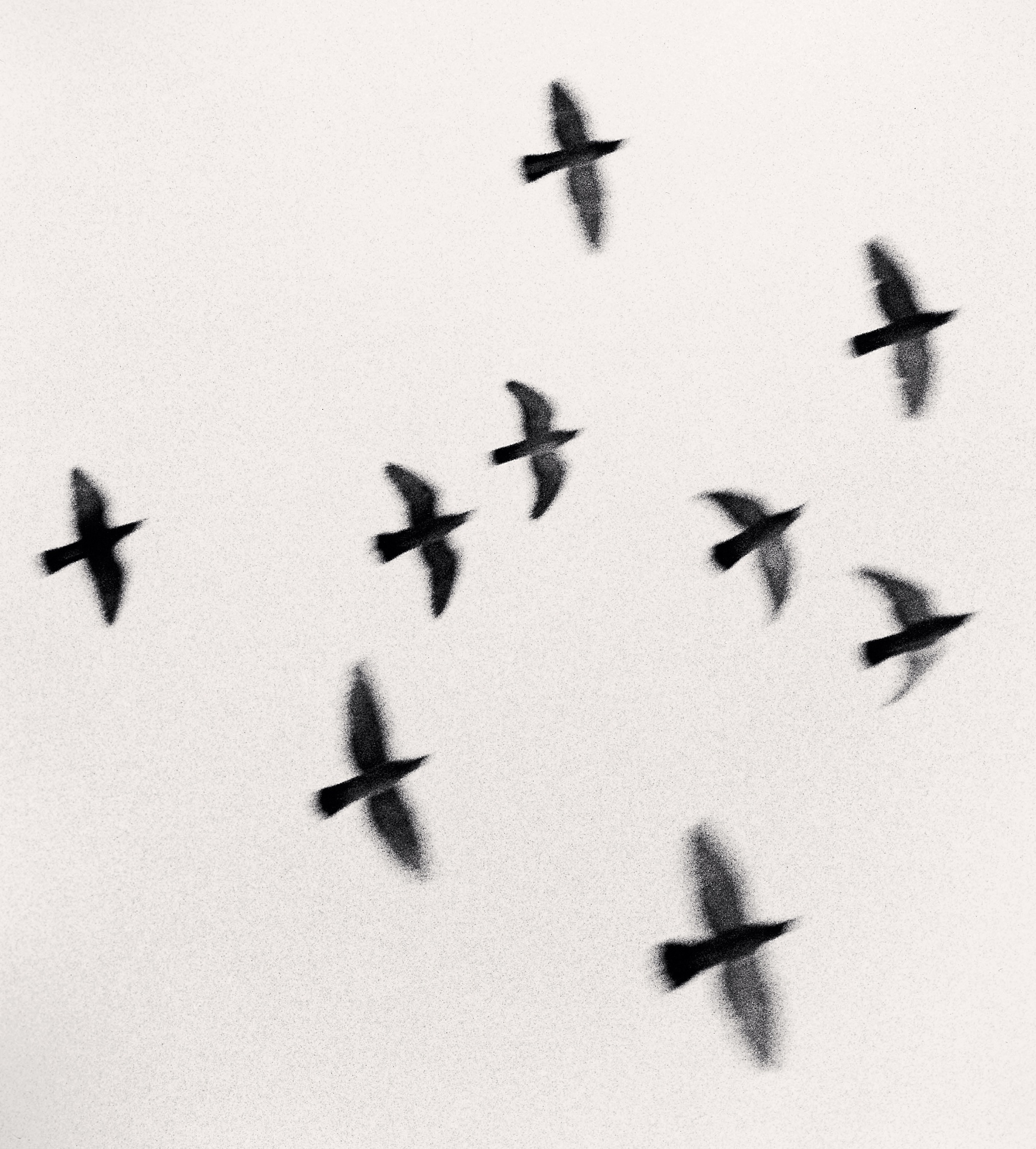
Introduced by Luke Whitaker
“These words and thoughts from Michael Kenna about the traditional analogue printing process are the result of his personal experiences of working in darkrooms for over half a century. They have provided me with extremely useful insights and background information that has greatly enhanced my appreciation of his exceptionally fine silver gelatin prints which I have been very pleased to exhibit at the Bosham Gallery. Today, in the third of five chapters from his Darkroom Diaries, Michael focuses on grain, cropping and toning.” Luke Whitaker, 2025

Sunset, Middleton Cheney, Northamptonshire, England 1974 © Michael Kenna
“A few thoughts on ‘grain’ which is the optical texture of the negative as shown on the print. Grain has become a thing of the past in digital photography but is still prevalent in silver photography. In my experience of seeing particular films come and go, there seems to have been a quest over the years for faster films, lower grain, better resolution and higher acutance. I suppose these are predictable goals for film manufacturers who have tried to eliminate grain as much as possible. Technically, grain increases with smaller and faster films, and with certain developers. Grain appears more pronounced with larger prints and with higher contrast. Grain also appears stronger on large flat areas of grey tonality, rather than in detailed spaces. A 35mm film printed on 8x10 inch paper will go through an enlargement factor of 58. The same film printed on 16x20 inch paper will be enlarged by a factor of 232. The higher the factor, the stronger the grain.
Personally, I have always liked grain in my prints. I regard it as part of the language of photography, almost like a brushstroke. In my early work, I purposely tried to emphasize grain through overexposed and/or over developed negatives. Sunset, Middleton Cheney, Northamptonshire, England 1974 is a good example of this. Certainly, grain obscures detail, but I don’t use photography to be a mirror of the world, and have little interest to be a recording machine, faithfully trying to duplicate everything that I see. Suggestion, interpretation, and evocation are more important to me than accurate description, and I have tried to use grain as an ingredient of that equation. Using the analogy of writing, I aim for haiku rather than an encyclopaedic description. Neither is better or worse, both are valid, they are personal choices in communication.
A quick word about cropping. Perhaps one of the most important and underrated tools in the studio is a set of L-frames. Of course, there is no need to crop if an image fits perfectly into the frame. This avoids over-enlargement, excessive grain, loss of acutance and resolution. However, I believe that photography is a subtractive process, where intelligent cropping, all the way from the initial photographing to making the final print, is very important. Cropping is a valuable continuation of the creative editing process begun when we first cropped, or edited part of the world, for our negative. What we leave out is sometimes as important as what we leave in.
For interest and as a reference: the 35mm format (36x24mm) was originally created by Leica because it doubled the size of existing motion picture film (18x24mm). It was essentially a business and financial decision to use the existing sprocket holes for their first small format cameras. 8x10 inch was the existing American standard plate glass size. A 4x5 inch negative was a convenient quarter. The standard sizes of printing papers are: 8x10, 11x14 and 16x20 inches. The bottom line is that the world does not always fit into these convenient formats. As creative individuals there is no reason to conform to somebody else’s prescribed format. We can, if we so choose, compose to the subject matter, both when photographing and printing.
The photographer David Vestal talks about Procrustes, the ancient Greek, who would have guests over for the weekend. He had one guest bed which his guests had to fit into - exactly. The bed was not adjustable, so he adjusted his guests. Those too short were stretched out, and those too long had their feet chopped off! I sometimes feel that we photographers often do the same in order to fit our images into a specific format. Then again, it is well worth acknowledging that many master photographers have printed their work full frame, often with the black lines marking the edge of the image. I immediately think of Henri Cartier Bresson, Olivia Parker, Richard Avedon, and there are so many others. I cannot say it enough, we each make our own personal choices.

Full Frame Work Print Of Nine Birds, Taisha Shrine, Honshu, Japan 2001 © Michael Kenna

Full Frame Work Print Upside Down Of Nine Birds, Taisha Shrine, Honshu, Japan 2001 © Michael Kenna

Final Cropped Interpreted Print Of Nine Birds, Taisha Shrine, Honshu, Japan 2001 © Michael Kenna
Back to the darkroom… after the development, stop bath, fixing and washing of the prints, I always tone my prints slightly with either selenium or sepia toners, or both. For the most part, I now use only sepia which is a two-bath process. The first bath contains Potassium Ferricyanide (bleach) and the second Sodium Sulphide. I try to tone the highlights of a print and leave the shadows quite cold. I have found it makes the print more three dimensional. There follows a final wash before a print is ready to be squeegeed and air dried on screens, before being flattened, usually the next day, in a heat press.
I have printed consistently for 50+ years now and should expect to be reasonably competent. I have printed commercially, in both black and white and in colour, and I have printed for other photographers in their respective styles of printing. However, even now, with all this experience, it sometimes takes me two or three sessions with a new negative to get a print that I am fully satisfied with. Fortunately, on more productive days, I can also often print a negative in 3-5 hours. Normally, no matter how confident I am, I make a few extra prints, some of which I consider a bit too light, and others a little dark. Dry down is an important consideration. A wet print is different than a finished dry print. Ansel Adams, for example, used a microwave oven to dry his test prints. The final decision on a print will be made in the cold hard light of the next day, or next week, or the following year after the print has been toned, washed, dried, flattened retouched, mounted, matted and perhaps even exhibited. There is always the possibility of a change of mind. I suspect that time will always be the best judge of a print.” Michael Kenna, 2025
Text & Photographs © Bosham Gallery & Michael Kenna. All Rights Reserved
